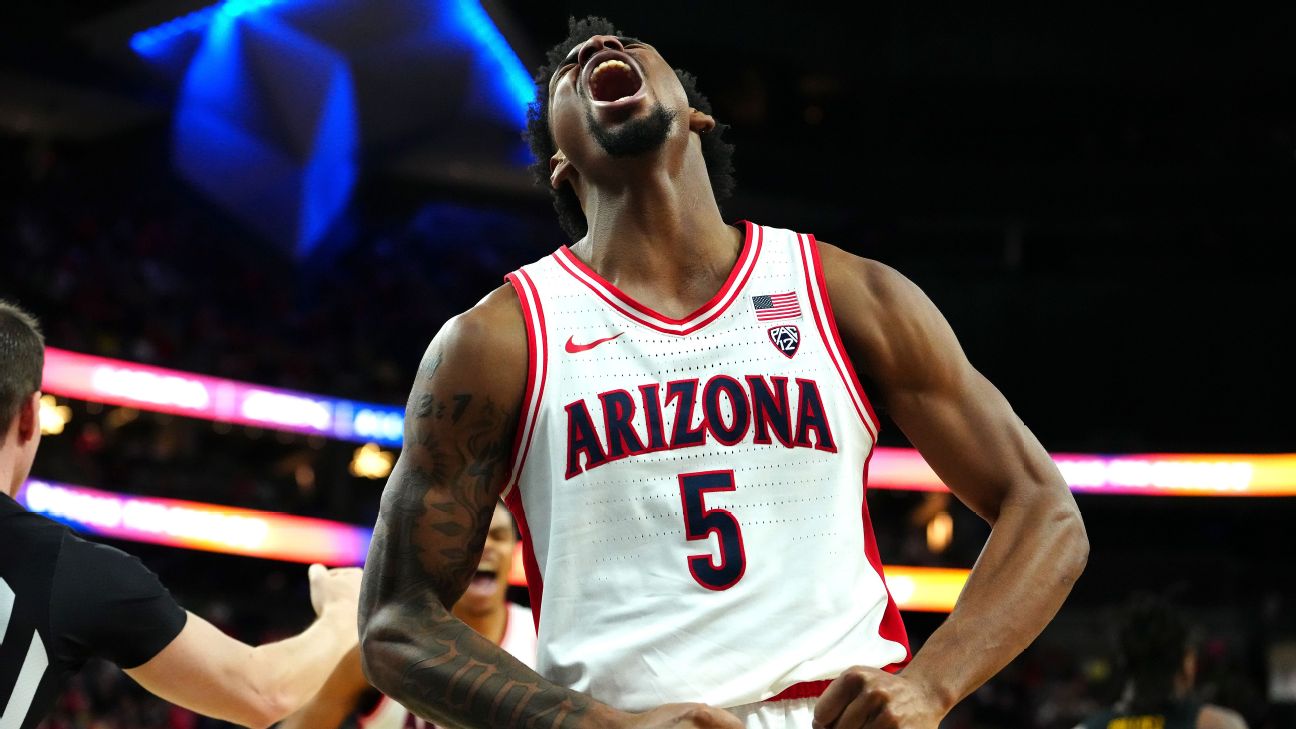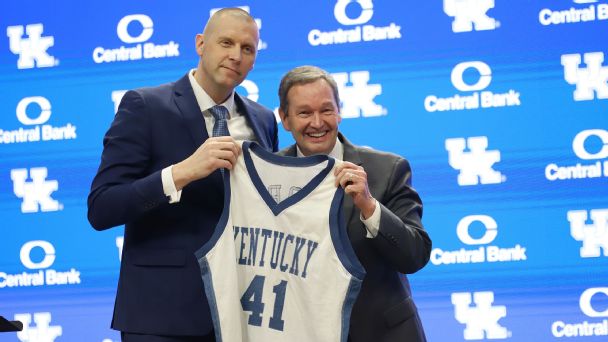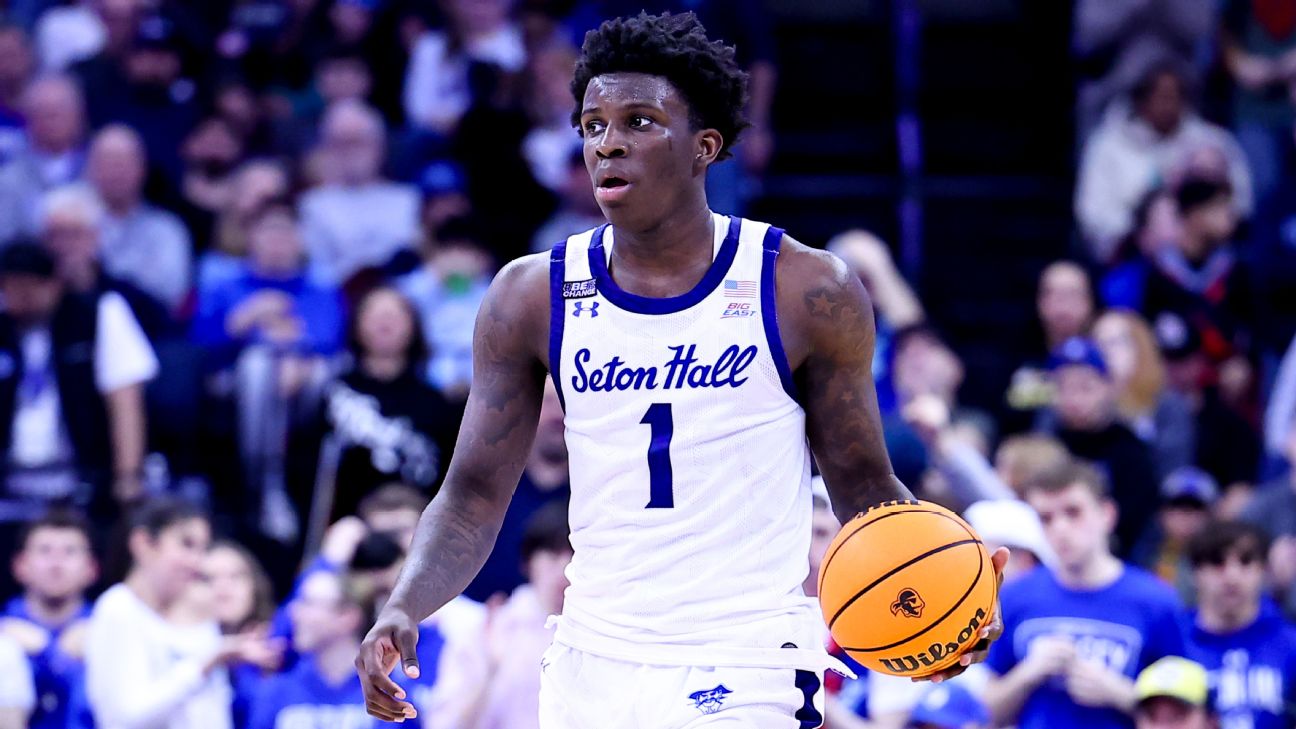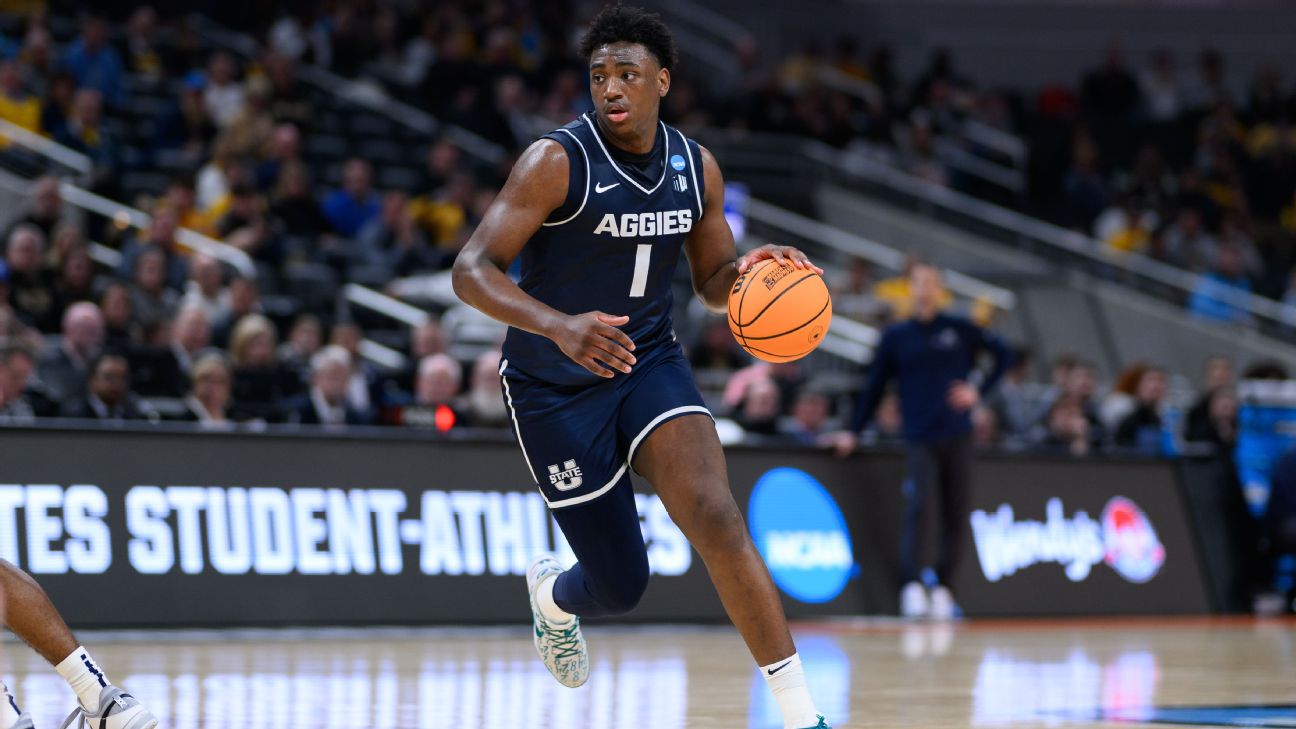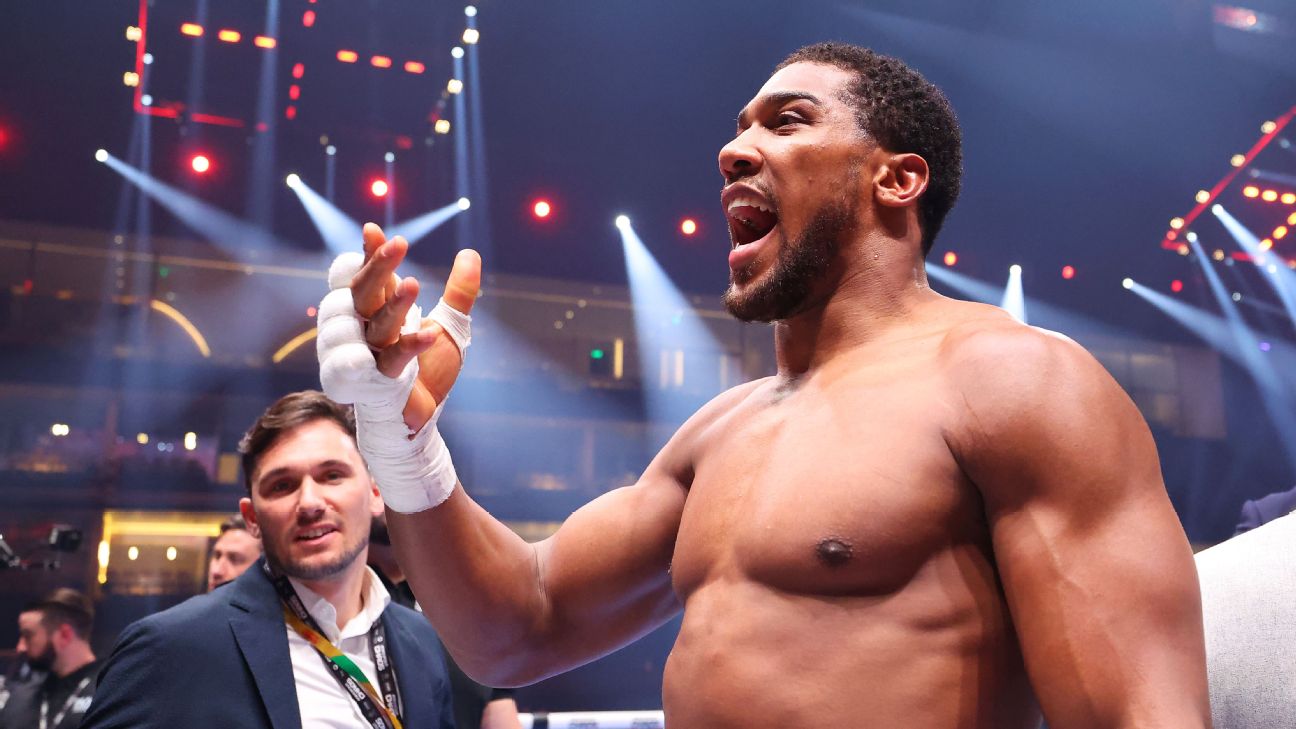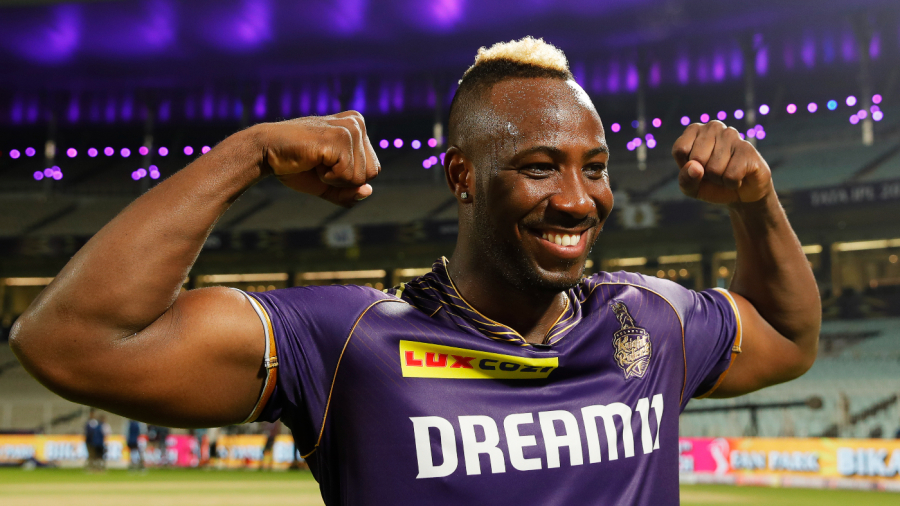![Edgerrin Cooper [608x342]](https://a.espncdn.com/photo/2024/0508/r1330252_608x342_16-9.jpg)
Which two Indian players got into an on-field argument during a Test
There are a lot of really good player-team matches coming out of the 2024 NFL draft. I see a bunch of players who are set up for success as rookies and beyond as they join their new teams.
But now that the dust has settled and teams are heading into rookie minicamps, I wanted to pick my 16 favorite fits among prospects who will have an impact in Year 1, factoring in traits, scheme, playcalling tendencies and coaching. Let's dive in on the ideal landing spots, starting with an excellent first-round quarterback and finishing with a midround safety. (I listed the prospects by draft pick order.)
Jump to: Day 1 players | Day 2/3 players
Jayden Daniels, QB, Washington CommandersDrafted: Round 1, No. 2
Why he fits: New Commanders offensive coordinator Kliff Kingsbury should be able to get the best out of Daniels -- who can be schemed as a dual-threat player -- by maximizing his throwing traits and dynamic running ability. I would expect a mix 11 and 12 personnel in Washington, with spread elements from Kingsbury's background incorporated. That will showcase Daniels' field vision and anticipatory skills from the pocket. He is a great decision-maker and an efficient passer, as he threw 40 touchdowns and only four interceptions at LSU last season.
The rookie quarterback can also work off run-pass options and be used situationally on designed rushes, where he has the speed to cut through defensive angles. Daniels ran for 527 yards and nine touchdowns on 58 designed carries in 2023, averaging 9.1 yards.
Rome Odunze, WR, Chicago BearsDrafted: Round 1, No. 9
Why he fits: At 6-foot-3 and 212 pounds with 4.45 speed, Odunze has the physical traits to play as the boundary X receiver in Chicago, where he can stretch defenses for rookie quarterback Caleb Williams. In his final season at Washington, Odunze led the nation with 21 receptions on throws of 20 or more air yards, and his 24 contested grabs overall tied for the most.
While Odunze has the route skills to align in the slot and the open field vision to produce after the catch, his ability to isolate outside -- opposite of veteran targets DJ Moore and/or Keenan Allen -- will create explosive play opportunities for Williams and the Bears' offense in 11 personnel sets.
J.J. McCarthy, QB, Minnesota VikingsDrafted: Round 1, No. 10
Why he fits: In Kevin O'Connell's system, McCarthy will be set up to throw with consistent rhythm on defined concepts, especially to the middle of the field. He completed 75.3% of his passes on throws inside the numbers last season at Michigan, including 15 touchdowns and three interceptions. McCarthy can heat up his pass velocity to drive the ball, attacking tight windows off layered reads -- especially with play-action elements rolled in. No NFL team used play-action more than the Vikings in 2023 (30.6% of dropbacks).
As a passer, McCarthy can target all three levels of the field -- short, medium and deep -- and he can create outside of structure when necessary. But it's the core passing/play-action concepts in O'Connell's offense that really make this fit work. And if McCarthy wins the No. 1 job over Sam Darnold in camp, he will be throwing the ball to a talented group of pass-catchers, led by top-tier wide receiver Justin Jefferson.
Byron Murphy II, DT, Seattle SeahawksDrafted: Round 1, No. 16
Why he fits: New coach Mike Macdonald will scheme up Murphy as an interior force, taking advantage of his ability to generate backfield chaos against the run game and heat up the pocket as a pass-rusher. In 2023, Murphy had 35 tackles, 6.5 tackles for loss and five sacks while at Texas.
Look for Macdonald to get Murphy loose on interior stunts, using the talented defensive tackle's quicks off the ball while also creating one-on-one matchups out of loaded fronts. Macdonald coached defensive tackle Justin Madubuike in Baltimore last season, and Murphy has similar disruptive traits to play that role in the Seattle front as a rookie.
Troy Fautanu, OT/G, Pittsburgh SteelersDrafted: Round 1, No. 20
Why he fits: Fautanu can play multiple spots on the offensive line, but he is slated to start at tackle opposite Broderick Jones in Pittsburgh. Fautanu is a tenacious people mover in the run game, as he can drive defenders off the ball and climb to secure the second level. That meshes with the zone-heavy run schemes we will see this season under new Steelers offensive coordinator Arthur Smith. Fautanu also has the foot quickness, length and lower-body balance to kick back and mirror edge rushers in pass protection.
I love the scheme fit, but I'm also looking at this as Pittsburgh targeting offensive linemen in the draft who can reset its identity up front. In addition to Fautanu, the Steelers added center Zach Frazier in the second round. That's two tone-setters for a club that wants to run the ball.
Quinyon Mitchell, CB, Philadelphia EaglesDrafted: Round 1, No. 22
Why he fits: The Eagles landed the top corner in the draft with Mitchell, and I see a pretty seamless fit here under new defensive coordinator Vic Fangio. Mitchell can use his explosive downhill speed -- he ran a 4.33-second 40-yard dash at the combine -- when playing off the ball in Cover 3 or quarters. But he also has the man coverage skills to challenge on the perimeter, with the ability to open and run with receivers on vertical concepts. He had 16 pass breakups last season at Toledo and is truly scheme-versatile.
In run support, Mitchell will set an edge and tackle. There's a definite physical element to his game, and you'll see him cut off the ball carrier's angle and put him on the ground. By drafting Mitchell and second-rounder Cooper DeJean, the Eagles upgraded the secondary with physical, fast and aggressive players who can find the ball.
Ladd McConkey, WR, Los Angeles ChargersDrafted: Round 2, No. 34 overall
Why he fits: The offense under new coach Jim Harbaugh will feature plenty of play-action concepts, and McConkey can live inside the numbers from slot alignments there, working to schemed voids or using his savvy route running to get loose from man coverage. McConkey will produce with his catch-and-run traits here, but he also has the 4.39 speed to test the top of the defense.
I fully expect McConkey to emerge as a volume target for quarterback Justin Herbert this season, thanks in part to his ability to make plays on third down. Los Angeles will lean on McConkey's ability to separate in critical situations. He averaged 14.1 yards per catch -- including 6.7 after the catch -- over the past two seasons.
Max Melton, CB, Arizona CardinalsDrafted: Round 2, No. 43 overall
Why he fits: Melton has the length and top-end speed (4.39) to lock in as a man coverage defender, either in press or off-man. But I also like the fit in Arizona under coach Jonathan Gannon because of Melton's ability to play with backfield vision as a zone defender. The Cardinals played a mix of split-safety and single-high zone last season on 63.8% of opponent dropbacks, the 11th most in the league. And Melton can stay on top of routes, read through to the quarterback and get a jump on the ball.
Melton had eight interceptions over the past three seasons at Rutgers, and he should get early playing time as a potential starter opposite veteran Sean Murphy-Bunting.
Edgerrin Cooper, LB, Green Bay PackersDrafted: Round 2, No. 45 overall
Why he fits: Under new coordinator Jeff Hafley, the Packers' defense will be more aggressive in coverage and pressure. That means Cooper is a great fit due to his three-down ability and playmaking upside. Hafley can scheme him as an off-the-ball/edge blitzer while also maximizing his second-level range in coverage. Plus, Cooper can get to the perimeter in the run game and track down ball carriers.
Cooper had 79 tackles, 13.5 tackles for loss, eight sacks and three pass breakups last season. He will play inside with Quay Walker in Green Bay, and he has the speed and talent to be developed in a system that will create impact opportunities.
Mike Sainristil, CB, Washington CommandersDrafted: Round 2, No. 50 overall
Why he fits: A true nickel corner with a playmaking mentality, Sainristil is a strong fit in Dan Quinn's defense. He can match and run in coverage, evidenced by six interceptions -- including two returned for touchdowns -- last season at Michigan. But he also has the awareness to patrol the seam/hook zones in Washington's split-safety schemes. And we know Quinn will scheme for Sainristil as a blitzer.
Sainristil has the skills needed to produce out of the slot in nickel and dime packages under Quinn, who will put him in a position to play a disruptive role as a rookie.
Cole Bishop, S, Buffalo BillsDrafted: Round 2, No. 60 overall
Why he fits: Bishop is at his best when playing with forward vision at the second and third levels of the field, and he joins a Bills defense that aligned in two-high on a 56.3% of coverage snaps last season, the most in the league. It will allow Bishop to drive top-down on the ball and attack the alleys as a run defender.
When the Bills do spin to single-high coverage, Bishop can play as an enforcer underneath. Buffalo moved on from safeties Micah Hyde and Jordan Poyer, so the door is open for Bishop to play an impact role as a rookie. He had 59 tackles, three sacks and two interceptions last season, doing a little bit of everything.
Malachi Corley, WR, New York JetsDrafted: Round 3, No. 65 overall
Why he fits: The Jets have a No. 1 receiver in Garrett Wilson, and they signed veteran Mike Williams. But the addition of Corley, a physical slot receiver, gives quarterback Aaron Rodgers a high-percentage catch-and-run target who can turn underneath throws into explosive gains.
Corley posted 692 yards after the catch last season at Western Kentucky, and he forced 17 missed tackles. In addition to his physical traits, he has the ball carrier vision to find cutback lanes and go.
Jonah Elliss, EDGE, Denver BroncosDrafted: Round 3, No. 76 overall
Why he fits: A skilled technician off the edge, Elliss adds depth to the Broncos' rotation at the outside linebacker spot. He's a fit for Vance Joseph's system in the base 3-4, and he can rush in nickel fronts, as Elliss posted 12.5 sacks last season at Utah. With solid counter moves and a relentless effort level that allows him to create secondary pass rush production, he can also be schemed off stunts and loops to dent the pocket. Denver's 42 sacks tied for 21st in the NFL last season, so Elliss will see action early.
Ja'Tavion Sanders, TE, Carolina PanthersDrafted: Round 4, No. 101 overall
Why he fits: When targeting tight ends last season, Panthers quarterback Bryce Young averaged just 5.5 yards per attempt. So adding Sanders, a tight end with middle-of-the-field stretch ability, is an upgrade for Young and the Panthers' pass game. Sanders has the frame and catch radius (6-foot-4, 245 pounds) to post-up defensive backs, and he can produce after the catch. Watch for him to run the seams, crossers and unders in the Carolina offense.
In his final season at Texas, Sanders averaged 7.8 yards after the catch per reception and logged 22 receptions of 15 yards or more. There's upside here for him in Dave Canales' offense.
Jaylen Wright, RB, Miami DolphinsDrafted: Round 4, No. 120 overall
Why he fits: Wright joins a crowded running back room, but he has future potential in Mike McDaniel's offense thanks to his explosive speed and pass-catching upside. McDaniel can get Wright to the perimeter on outside zone concepts, or even get him touches by scheming him as a receiving target or using him on fly sweeps.
Wright ran a 4.38-second 40 at the combine, and he had 35 rushes of 10 or more yards last season for the Vols. He has home run ability in a Dolphins offense that prioritizes straight-line speed.
Malik Mustapha, S, San Francisco 49ersDrafted: Round 4, No. 124 overall
Why he fits: Mustapha will compete for playing time in the 49ers' secondary, where he'll fit as an instinctual split-field safety with an urgent play demeanor that shows up at multiple levels of the field. Mustapha is an absolute rocket to the ball as an alley runner, and he's a strong tackler at the point of attack. Under new San Francisco defensive coordinator Nick Sorenson, he has the range to work off the numbers in Cover 2 or match vertically in quarters.
Mustapha totaled 75 tackles and 5.5 tackles for loss in his final season at Wake Forest, and he has the skills to start his pro career as an immediate producer on special teams coverage units.


